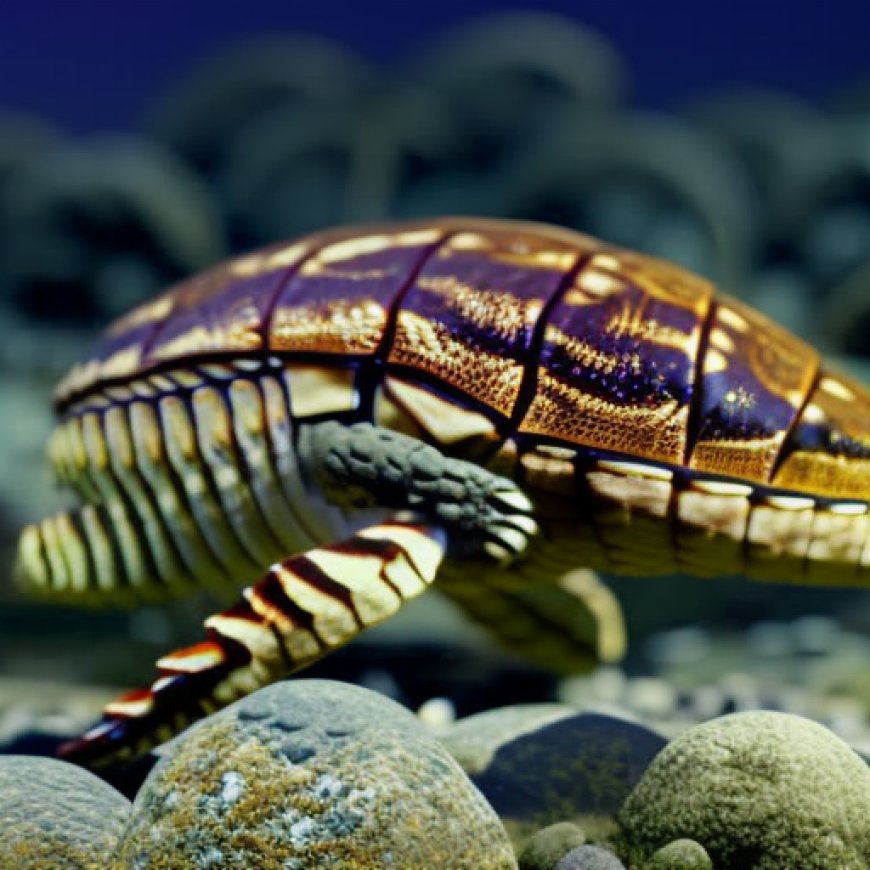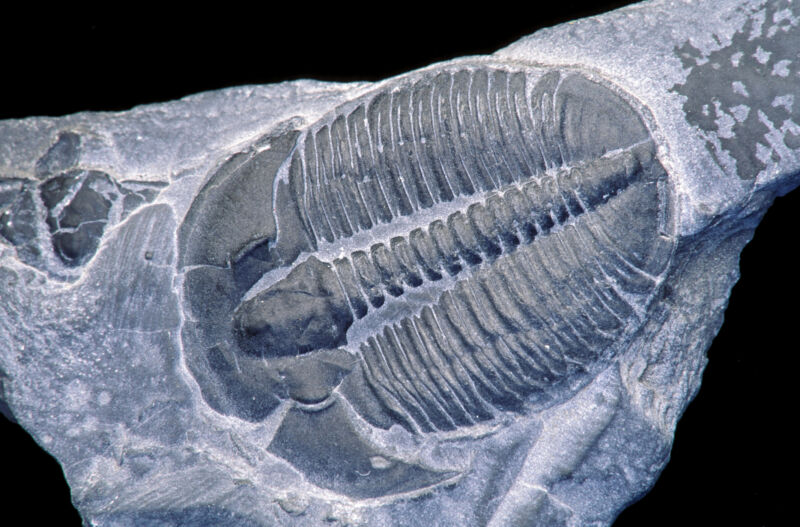The trade-off that helped some trilobites survive mass extinctions
The trade-off that helped some trilobites survive mass extinctions Ars Technica


Trilobites Adapted to Survive Oxygen Depletion

Hundreds of millions of years before anthropogenic climate change was ever a thing, life on Earth suffered mass extinctions due to climate change brought on by natural causes. Even so, there were still organisms that held on and adapted to survive an otherwise lethal lack of oxygen. Trilobites managed to make it through two devastating mass extinctions and still escape any surviving predators.
Adaptation of Trilobites: Auracopleura koninckii
As paleobiologists Jorge Esteve of the University of Madrid and Nigel Hughes of UC Riverside found, one trilobite species, Auracopleura koninckii, was especially successful when oxygen in the ocean reached dangerously low levels. This creature persevered because of an unusual adaptation. Like most trilobites, A. koninckii curled its segmented body into a tight ball to avoid being eaten. But it also kept growing more segments with additional legs that doubled as gills.
Even though the additional segments could not roll up completely, more legs meant more breathing opportunities, which gave this species an advantage when oxygen levels were low.
Keep on Rolling: Fossil Evidence
Fossils of A. konickii have already been found in a curled position that is thought to have deterred predators from trying to take a bite. Trilobites could pull this off because their thoracic segments fit right above their heads when rolled up, much like modern pillbugs. The problem is that many of the A. knoickii fossils were also flattened by sediment that accumulated on the seafloor, making it difficult to interpret their anatomy. Still, there are a few specimens that kept their shape after some 250 million years. Esteve and Hughes studied a particular specimen, labeled NMP-L12807, that is impeccably preserved in its rolled posture.
When Hughes and Esteve compared their A. koninckii specimen to others in different developmental phases, they saw that younger individuals with up to 17 segments could roll into a perfect ball with their heads just under the tips of their tails. As they mature, however, the trilobites would add segments with each molt. By the time they had 18 to 22, they could no longer do this tuck. Simulations of longer trilobites rolling up showed that a part of the tail would have had to extend over the head.
Adaptation to Oxygen Depletion
Why would A. koninckii evolve to add more segments to its body if that could make it vulnerable to attack? What would otherwise be a disadvantage was actually an adaptation to diminishing oxygen levels near the seafloor it lived on. Every segment on a trilobite had two legs, which functioned as gills that helped them breathe by absorbing oxygen from the water and releasing carbon dioxide. More legs meant more incoming oxygen. Esteve and Hughes think that a dwindling oxygen supply could have been the reason that these trilobites started to add extra segments once they reached maturity.
There is still the issue of predators, but A. konickii probably had far fewer encounters with things with gaping mouths and too many teeth. The mass extinctions it survived by adding thoracic segments, which increased its breathing capabilities, meant a grim fate for creatures that could not adapt to anoxia, and predators were no exception. Another way of looking at its evolution, at least as the scientists suggested, is that fewer predators meant that this trilobite could tolerate developing more breathing equipment because it wasn’t at risk from snapping jaws.
“Above a certain size, threshold predatory pressure on A. koninckii [possibly] declined, mitigating the need for [tight rolling] and succeeded by evident variation in trunk segment numbers,” the researchers said in the same study.
Maybe this was a trade-off, but it apparently worked to the trilobite’s advantage. Organisms sometimes evolve in a way that protects them against the greatest of multiple dangers. A. koninckii must have been more threatened by a lack of oxygen than predators when it started adding extra segments, and the gills those segments added gave it an edge when it came to survival.
Conclusion
This study highlights the remarkable adaptations of trilobites, such as Auracopleura koninckii, to survive in challenging environments with low oxygen levels. By adding extra segments and legs that functioned as gills, these trilobites were able to continue breathing and avoid extinction during mass extinctions caused by climate change. This research contributes to our understanding of how organisms can adapt to environmental changes and provides insights into the importance of biodiversity and resilience in achieving the Sustainable Development Goals (SDGs).
Proceedings of the Royal Society B, 202
SDGs, Targets, and Indicators
| SDGs | Targets | Indicators |
|---|---|---|
| SDG 13: Climate Action | 13.1 Strengthen resilience and adaptive capacity to climate-related hazards and natural disasters | No specific indicators mentioned in the article |
| SDG 15: Life on Land | 15.1 By 2020, ensure the conservation, restoration, and sustainable use of terrestrial and inland freshwater ecosystems and their services, in particular forests, wetlands, mountains, and drylands, in line with obligations under international agreements | No specific indicators mentioned in the article |
| SDG 15: Life on Land | 15.5 Take urgent and significant action to reduce the degradation of natural habitats, halt the loss of biodiversity, and, by 2020, protect and prevent the extinction of threatened species | No specific indicators mentioned in the article |
| SDG 14: Life Below Water | 14.1 By 2025, prevent and significantly reduce marine pollution of all kinds, in particular from land-based activities, including marine debris and nutrient pollution | No specific indicators mentioned in the article |
1. Which SDGs are addressed or connected to the issues highlighted in the article?
SDG 13: Climate Action
The article discusses climate change and its impact on life on Earth. It mentions that natural causes of climate change in the past led to mass extinctions. While the article does not specifically address the actions needed to address climate change, it highlights the importance of understanding its effects on organisms.
SDG 15: Life on Land
The article focuses on the adaptation and survival of trilobites, an ancient organism, in response to changing environmental conditions. This connects to the goal of ensuring the conservation, restoration, and sustainable use of terrestrial ecosystems and protecting threatened species.
SDG 14: Life Below Water
The article mentions that trilobites lived in the ocean and adapted to low oxygen levels. While the article does not directly discuss marine pollution or other aspects of SDG 14, it provides insights into the resilience and survival strategies of marine organisms.
2. What specific targets under those SDGs can be identified based on the article’s content?
Target 13.1: Strengthen resilience and adaptive capacity to climate-related hazards and natural disasters
The article highlights the ability of trilobites to adapt and survive in environments with low oxygen levels, which can be considered a climate-related hazard. Understanding the mechanisms behind their adaptation can contribute to strengthening resilience and adaptive capacity to similar hazards.
Target 15.1: Ensure the conservation, restoration, and sustainable use of terrestrial and inland freshwater ecosystems and their services
The article emphasizes the importance of understanding and preserving ancient organisms like trilobites, which lived in terrestrial and marine ecosystems. By studying their adaptations, we can contribute to the conservation and sustainable use of these ecosystems.
Target 15.5: Take urgent and significant action to reduce the degradation of natural habitats, halt the loss of biodiversity, and protect threatened species
The article indirectly highlights the importance of protecting threatened species by discussing the survival strategies of trilobites. By understanding how organisms adapt to changing environments, we can take action to prevent the loss of biodiversity and protect vulnerable species.
3. Are there any indicators mentioned or implied in the article that can be used to measure progress towards the identified targets?
No specific indicators are mentioned or implied in the article that can be used to measure progress towards the identified targets.
Behold! This splendid article springs forth from the wellspring of knowledge, shaped by a wondrous proprietary AI technology that delved into a vast ocean of data, illuminating the path towards the Sustainable Development Goals. Remember that all rights are reserved by SDG Investors LLC, empowering us to champion progress together.
Source: arstechnica.com

Join us, as fellow seekers of change, on a transformative journey at https://sdgtalks.ai/welcome, where you can become a member and actively contribute to shaping a brighter future.







